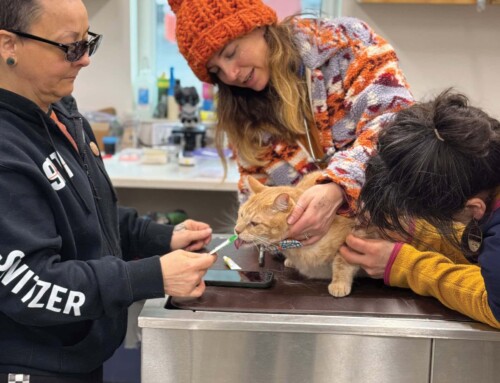Bruce Schindler is a pre-historic storyteller.
Through his craft, he shares the tale of a long-lost animal who’s story for survival culminated with a tragic end and subsequent burial underneath layers of permafrost, only to then be resurrected through Schindler’s hands centuries later.
He is one of many local mammoth ivory artists in Skagway, with a beautiful studio tucked away in the woods a few miles out of town, where he polishes, carves and preserves the ivory of extinct animals.
“The more you understand mammoth ivory and the history of it, and the grandeur of what the mammoths were, the more the story is so outstanding,” Schindler said.
He has been working on developing his craft since he first discovered fossilized mammoth ivory carving when came to Skagway in 1993 to drive a tour bus.
Since then, mammoth ivory carving and preservation has turned into his livelihood.
When it comes to creating a work of art from a mammoth’s tusk, Schindler said he plays the role of a facilitator rather than creator.

Photo by Julianne Stanford | Schindler cuts a tusk in half that begins to fall apart while the blade further saws into the ivory.
“If it’s a good looking piece of ivory in the state that it’s in, I’m going to leave it whole, and I’ll maybe carve just a small part of it and leave the rest of it untouched,” he said, “because raw ivory that’s been dug out of the ground tells itself, a story of survival.”
If the tusk has been in the ground longer than others or has been exposed to the elements in a way that has caused it to begin to erode, that’s when he will start working it into something else.
“Now if it’s not a good piece of ivory, I’m going to cut into it. I’m going to break it down. I’m going to split among cracks that are already there until I find pieces that I can use,” he said. “And those pieces I might shape into smaller pieces like small pendants, maybe small sculptures, maybe I’ll slice them into earrings.”
No matter how he decides to use a tusk, Schindler said he has a common goal for each thing he creates using the medium.
“My goal is to best honor the ivory, far more than just to make a few bucks off of it,” he said.
Alaskan ivory carvers like Schindler are becoming increasingly concerned that their livelihood and dedication to preserving the last remnants of mammoths on Earth could become collateral damage in the global war to clamp down on the multibillion-dollar illegal elephant ivory trade.
On June 6, U.S. Fish and Wildlife issued a revision to their policy on endangered African elephants from the Endangered Species Act of 1973 that will effectively institute a nearly complete ban on the commercial trade of African elephant ivory.
After the ruling becomes effective on July 6, 2016, the sale of elephant ivory products across state lines will be prohibited, unless the ivory is more than 100 years old or if it’s a small feature of a manufactured good, such as the ivory keys of a piano or the ivory handle of a pistol with ivory that was sourced prior to 1976.
Schindler advocates for the institution of the ban from his standpoint as an artist who works with the remnants of an extinct animal.

Photo by Julianne Stanford | Schindler stands next to two full size mammoth tusks hanging from the ceiling in his studio that he intends to restore and preserve.
“If we keep pushing elephants over the edge, they’ll become extinct too, and let’s not take the elephant to the degree of the mammoth,” he said. “I don’t want to have to preserve elephant tusks because they’re gone, we want to preserve the elephants themselves.”
However, Schindler objects to the more comprehensive, far-reaching ivory ban that a few states have implemented over the past couple years that goes steps further than the federal government’s actions.
New York, New Jersey and California have recently passed laws that explicitly ban the importation, sale, trade, barter or purchase of any type of ivory, including mammoth ivory.
Such a large scope is intended to make enforcement of the elephant ivory ban as easy as possible by not allowing there to be any question over a piece of ivory’s origin.
New Jersey and New York’s ban have already been instituted, and California’s ban will come into effect on July 1.
Similar legislation in Hawaii is awaiting a signature from Gov. David Ige and many believe it will pass. If it does, it will come into effect on January 1, 2017.
“One of the problems with bans like these are that they perpetuate ignorance. It over-simplifies things,” Schindler said. “You lose the story of the mammoth and you destroy something that’s beautiful. Ignorance is not the way to protect something.”
Instead of banning mammoth ivory outright, Schindler suggests that educating the public on the differences between the two types of ivory would be a more effective method of enforcing the federal ivory ban.
The appearance between the two is easily distinguishable to the naked eye. Elephant ivory is often smooth and has pure white color.
“It’s very predictable and easy to carve because it’s not going to crack and have as much unexpected limitations to it,” Schindler said.
Mammoth ivory is far more rugged and imperfect.
“It’s usually stained by the minerals in the ground where it was buried, so it’s anywhere from a creamy white to stained on the outside with browns, black, blue, red, whatever minerals were in the ground will impart it’s colors into the ivory, which I think makes it utterly spectacular,” he said.
There’s another key factor that distinguishes the two, known as Schreger Lines, which are unique grain patterns visible in each type of ivory once they’ve been cut in to.
“The Schreger lines in elephant ivory are obtuse, they’re very flat,” Schindler said. “With mammoth ivory, [the lines] are more acute, they’re more sharp, triangular shape.”
Those identifying lines and the color variances between the types of ivory would make it difficult to smuggle elephant ivory into the U.S. under the guise of being mammoth ivory.
“Every once in a while you can come across a piece of ivory that you’re just not really sure about, but for the most part it’s very clear the difference,” he said. “In most cases, someone who has just spent 30 seconds looking at them can tell the difference.”
Schindler said there’s also an important philosophical difference between the sourcing of the two substances.
“For elephant ivory, an animal has to be slaughtered for it, and so it means the death of something, as opposed to mammoth ivory, where it has been preserved in ice for 35,000 years and once it’s been exposed, if you don’t use the ivory, it will rot into the ground,” Schindler said. “So in using elephant ivory, you’re destroying an animal, and in using mammoth ivory you’re actually resurrecting something that has survived for tens of thousands of years.”
Schindler said the state-level bans have already begun to impact his business.
“I’ve lost customers because they’re in California, and they can’t sell in California anymore,” Schindler said. “And I’m about to lose customers in Hawaii too, so it’s really had a detrimental effect.
However, Schindler said the potentially devastating loss of the last remaining reminders of the large, majestic animals that once roamed the earth is the most tragic aspect of the state-level mammoth ivory bans and is far greater than any monetary loss.
“Mammoth ivory has survived frozen for 35,000 years. It deserves to be preserved, and the only way to preserve it is to use it,” Schindler said.





I agree,that Mammoth Ivory should not be banned.It gives Honor to the Beautiful Mammoth who has perished.Elephants should be protected ,of course.Keep up the good work!Th as nk you
In trying to give your article a 5 star rating. I agree 100%, the page shows that I gave it a 1 star rating and wont let me correct it. I’m very sorry about that. I too have worked with Mammoth Ivory in sculptures and other things. Ivory is the oldest man made object in the history of the world. The banning of mammoth and mastodon ivory is a monumental mistake that will only disadvantage artist and collectors living in those areas. The idea of banning mammoth ivory to protect elephants, is as stupid as banning all diamonds to prevent the sale of blood diamonds. Why not promote the sale and use of mammoth ivory, such a promotion would increase the public’s understanding the difference between the different types of ivory. This will do so much more to protect the elephants as it increases awareness of both the plight of the elephant, and that by buying mammoth ivory they are preserving the mammoth ivory that would otherwise just rot and weather away in the sun where it is exposed.
0.5
5
Hello Mr. Schindler;
I fully support your point of view and agree with you fully. I think by these misguided laws, they are in essence causing the Mammoth and Mastodon to become extinct again. I love the look and feel of ivory, but I would never support the illegal killing of African or Asian Elephants. Sorry to say, but the oriental (China) greed for ivory and the money it generates has ruined it for the few that see the beauty of the Mammoth and Mastodon and its iconic ivory. I have a few pieces of Mastodon Ivory and have been looking for Mammoth ivory, but not for carving, but just to display it in its natural state. But with my limited incoming, this dream has been very hard. too come by. I also have one piece of mammoth ivory carving that I got many years ago, I believe in 1972, and its beauty is timeless. I was wondering if you would consider letting me know if I could get a price list of the inventory you have for sale. Again, I’m looking for a small mastodon, but especially mastodon tusk end pieces, the whiter the better. I also would like to know if I wanted something carved from mastodon ivory pieces (which I would provide) if you would consider carving something for me. My personal email address is (umimak16@gmail.com), I would love to hear from you. Have a great day – Leo Aguirre
3.5
4.5